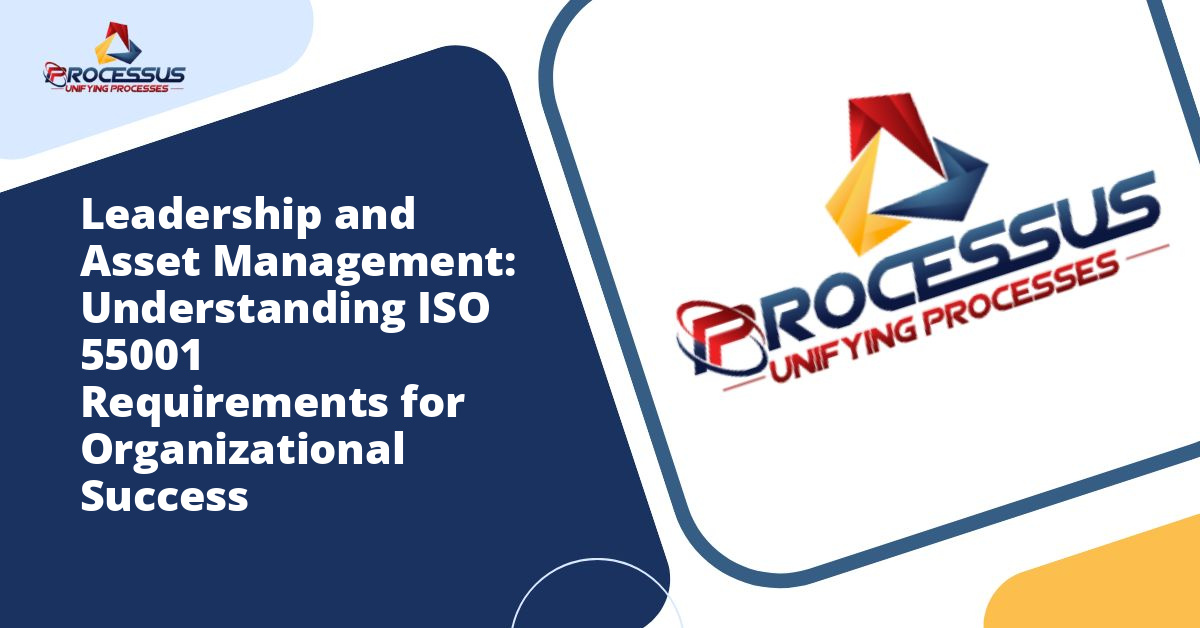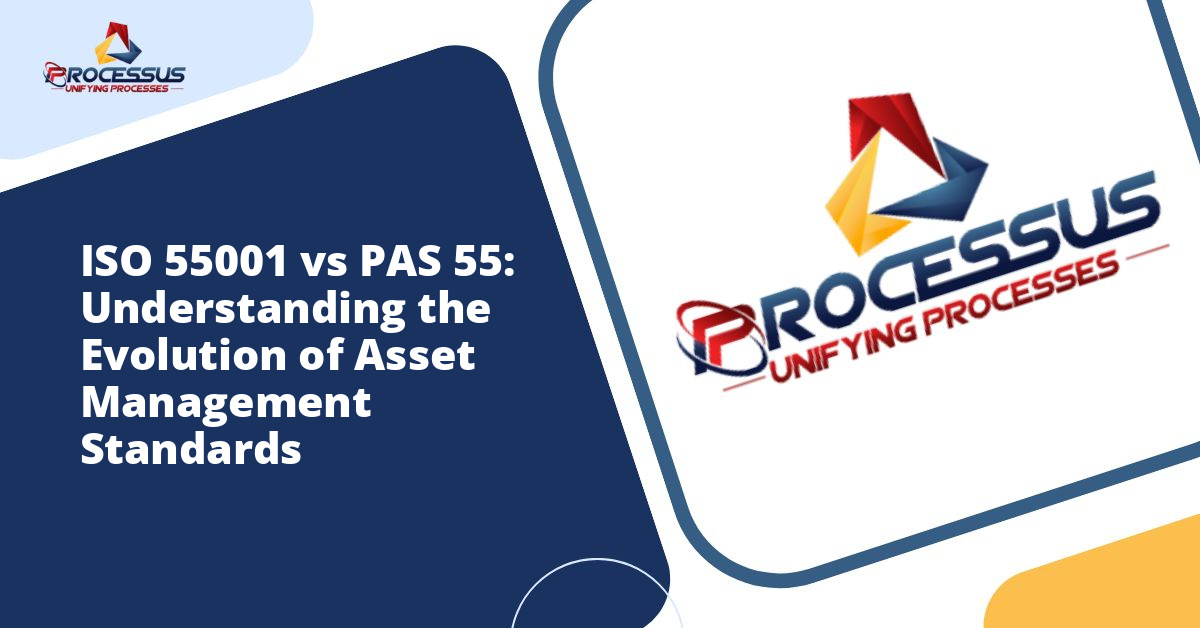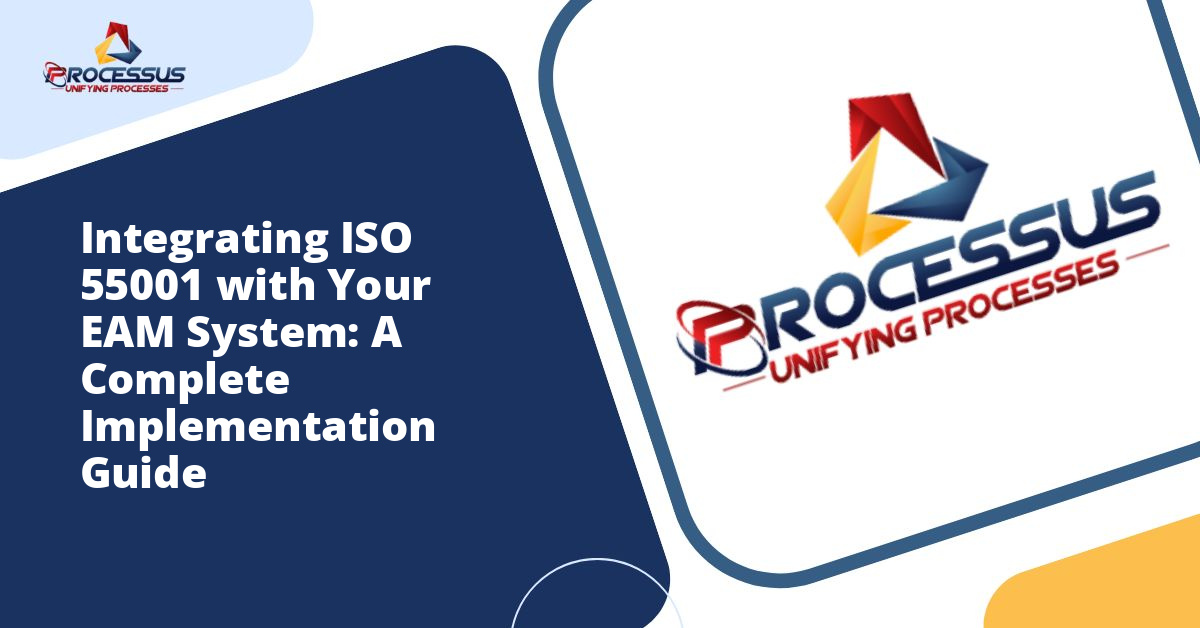Transportation infrastructure forms the backbone of modern economies, connecting communities, facilitating trade, and enabling economic growth. From highways and bridges to railways and airports, these critical assets require sophisticated management approaches to ensure safety, reliability, and cost-effectiveness throughout their lifecycle. ISO 55001, the international standard for asset management, has emerged as a powerful framework for organizations responsible for transportation infrastructure, offering systematic methods to optimize asset performance while managing risks and costs.
This comprehensive guide explores how ISO 55001 applies to transportation infrastructure, the benefits it delivers, implementation strategies, and real-world considerations for asset managers, transportation authorities, and infrastructure operators. You might also enjoy reading about Predictive Maintenance Strategies Under ISO 55001: A Complete Guide to Asset Management Excellence.
Understanding ISO 55001 and Its Relevance to Transportation
ISO 55001 is an internationally recognized standard that specifies requirements for establishing, implementing, maintaining, and improving an asset management system. Published in 2014 by the International Organization for Standardization, this standard provides a structured approach to managing physical assets throughout their entire lifecycle, from conception and acquisition through operation, maintenance, and eventual disposal. You might also enjoy reading about ISO 55001 Asset Management Plans: A Practical Guide for Organizations.
Transportation infrastructure presents unique challenges that make ISO 55001 particularly relevant. These assets typically require substantial capital investment, have extended lifecycles spanning decades, face constant usage demands, and directly impact public safety and economic productivity. The standard offers transportation organizations a systematic way to address these challenges while balancing competing priorities of service delivery, cost management, risk mitigation, and regulatory compliance. You might also enjoy reading about ISO 55001 for Utilities: Transforming Water and Energy Sector Asset Management.
Core Principles of ISO 55001
The standard is built on several fundamental principles that align closely with transportation infrastructure management needs:
- Value realization: Assets should deliver value to the organization and its stakeholders, whether through economic returns, social benefits, or environmental outcomes.
- Alignment: Asset management activities must align with organizational objectives and strategic plans.
- Leadership: Senior management commitment is essential for establishing appropriate culture, resources, and accountability.
- Assurance: Decision-making should be based on accurate data, systematic analysis, and defined risk assessment processes.
The Transportation Infrastructure Challenge
Transportation assets face distinctive pressures that complicate their management. Understanding these challenges helps clarify why adopting ISO 55001 provides significant advantages.
Aging Infrastructure and Deferred Maintenance
Many developed nations struggle with aging transportation infrastructure that was constructed decades ago. Bridges, roads, and rail systems often exceed their original design life, requiring increasingly frequent maintenance and rehabilitation. Budget constraints have led to deferred maintenance in many jurisdictions, creating a growing backlog of needed repairs and raising safety concerns. ISO 55001 helps organizations develop data-driven maintenance strategies that prioritize interventions based on condition assessment, criticality, and available resources.
Increasing Demand and Capacity Constraints
Population growth and economic development continue driving increased demand for transportation services. Existing infrastructure frequently operates at or near capacity, making expansion and optimization critical. The standard supports strategic asset management by helping organizations forecast future demand, evaluate capacity enhancement options, and make informed investment decisions that align with long-term service objectives.
Climate Change and Resilience
Transportation infrastructure faces escalating threats from extreme weather events, sea-level rise, and changing climate patterns. Floods, hurricanes, wildfires, and temperature extremes can damage assets and disrupt service. ISO 55001 provides a framework for assessing climate-related risks, incorporating resilience into asset design and maintenance practices, and developing adaptive strategies that protect critical infrastructure.
Technological Change and Innovation
Rapid technological advancement presents both opportunities and challenges. Intelligent transportation systems, connected vehicles, alternative fuels, and new construction materials offer potential benefits but require careful evaluation and integration. The standard supports systematic assessment of new technologies, ensuring innovations align with organizational objectives and deliver genuine value.
Key Components of ISO 55001 for Transportation Infrastructure
Implementing ISO 55001 involves establishing multiple interconnected components that together create a comprehensive asset management system.
Strategic Asset Management Plan
The strategic asset management plan (SAMP) translates organizational objectives into asset management strategies and tactics. For transportation agencies, this document articulates how infrastructure assets will support service delivery goals, economic development objectives, safety targets, and environmental commitments. The SAMP defines the scope of the asset management system, establishes performance metrics, and outlines resource allocation approaches.
Effective SAMPs consider multiple planning horizons, from immediate operational needs to long-term strategic considerations spanning decades. They identify critical assets, assess current condition and performance, forecast future requirements, and establish priorities for investment and intervention.
Risk Management Framework
Risk management is central to ISO 55001 and particularly crucial for transportation infrastructure. The standard requires organizations to identify, assess, and manage risks that could prevent achievement of asset management objectives. For transportation assets, relevant risks include structural failure, service disruption, safety incidents, regulatory non-compliance, budget overruns, and environmental damage.
A robust risk management framework establishes consistent methods for evaluating likelihood and consequence, determining risk tolerance levels, and implementing appropriate controls or mitigation measures. This systematic approach enables informed decision-making about maintenance priorities, capital investments, and operational protocols.
Asset Information Systems
Effective asset management requires accurate, accessible information about asset inventory, condition, performance, costs, and risks. ISO 55001 emphasizes the importance of asset information systems that collect, store, and analyze relevant data to support decision-making.
For transportation infrastructure, this typically involves geographic information systems, pavement management systems, bridge management systems, and maintenance management software. These tools enable condition monitoring, performance tracking, lifecycle cost analysis, and optimization of maintenance strategies. The standard requires organizations to define information requirements, establish data quality standards, and implement processes for maintaining data accuracy and currency.
Lifecycle Management Processes
ISO 55001 promotes lifecycle thinking that considers all phases of asset existence. For transportation infrastructure, this encompasses:
- Planning and design: Ensuring new assets align with strategic objectives, incorporate appropriate standards and specifications, and consider whole-life costs and performance.
- Acquisition and construction: Procuring or building assets efficiently while meeting quality, safety, and performance requirements.
- Operation and maintenance: Managing day-to-day asset operation, performing preventive and corrective maintenance, and monitoring performance against defined standards.
- Renewal and rehabilitation: Restoring asset condition and functionality through strategic interventions that extend useful life.
- Disposal and replacement: Retiring assets that have reached end-of-life and replacing them with appropriate alternatives.
Performance Monitoring and Continuous Improvement
The standard requires organizations to establish performance indicators, monitor results, and use performance data to drive continuous improvement. Key performance indicators for transportation infrastructure might include pavement condition index, bridge sufficiency ratings, service reliability metrics, customer satisfaction scores, maintenance cost per lane-kilometer, and safety incident rates.
Regular performance review enables organizations to identify trends, detect emerging problems, evaluate the effectiveness of asset management strategies, and make adjustments as needed. This commitment to continuous improvement ensures the asset management system remains effective and responsive to changing conditions.
Benefits of ISO 55001 Implementation for Transportation Organizations
Adopting ISO 55001 delivers multiple benefits that enhance organizational effectiveness and asset performance.
Improved Decision-Making
The standard establishes systematic processes for evaluating options and making decisions based on accurate data and defined criteria. This reduces reliance on subjective judgment and political pressure, leading to more rational resource allocation and better long-term outcomes. Transportation agencies gain clearer understanding of asset condition, performance gaps, and investment needs, enabling them to prioritize projects and allocate budgets more effectively.
Enhanced Financial Performance
ISO 55001 promotes lifecycle cost thinking that considers acquisition costs, operating expenses, maintenance requirements, and disposal costs when evaluating asset decisions. This perspective helps organizations avoid false economies where low initial costs lead to higher lifetime expenses. By optimizing maintenance strategies and improving asset utilization, transportation agencies can reduce costs while maintaining or improving service levels.
Better Risk Management
The systematic approach to risk identification and assessment improves organizational resilience. Transportation agencies can anticipate potential problems, implement preventive measures, and prepare contingency plans for critical assets. This proactive stance reduces the likelihood of catastrophic failures, service disruptions, and safety incidents while improving regulatory compliance.
Increased Stakeholder Confidence
ISO 55001 certification demonstrates commitment to professional asset management practices. This enhances credibility with funding authorities, regulatory bodies, investors, and the public. Transportation organizations can more effectively justify budget requests, demonstrate responsible stewardship of public assets, and build support for necessary infrastructure investments.
Organizational Alignment and Clarity
The standard promotes alignment between asset management activities and organizational objectives. This creates clarity about priorities, roles, and responsibilities across the organization. Staff at all levels understand how their work contributes to strategic goals, improving motivation and coordination.
Implementing ISO 55001 in Transportation Organizations
Successfully implementing ISO 55001 requires careful planning, sustained commitment, and systematic execution.
Leadership Commitment and Culture Change
Senior leadership must champion the implementation effort, allocating necessary resources and demonstrating visible commitment. Asset management represents a cultural shift for many organizations, moving from reactive maintenance approaches to strategic lifecycle thinking. Leaders must communicate the vision, explain the benefits, address concerns, and reinforce desired behaviors.
Gap Analysis and Planning
Organizations should begin with a comprehensive gap analysis comparing current practices against ISO 55001 requirements. This assessment identifies strengths, weaknesses, and priority areas for improvement. The results inform development of an implementation plan that sequences activities, assigns responsibilities, establishes timelines, and defines resource requirements.
Building Capabilities and Competencies
Effective asset management requires appropriate knowledge, skills, and tools. Organizations need to invest in training programs that develop staff competencies in asset management principles, risk assessment methods, data analysis techniques, and relevant technologies. Building internal expertise ensures sustainable implementation and ongoing system effectiveness.
Developing Documentation and Procedures
ISO 55001 requires documented policies, procedures, and processes that define how the asset management system operates. Transportation organizations must develop or update documentation covering strategic planning, risk management, asset information management, lifecycle processes, performance monitoring, and continuous improvement activities. Documentation should be clear, accessible, and practical to support consistent implementation.
Stakeholder Engagement
Transportation infrastructure affects multiple stakeholders, including users, communities, regulatory authorities, funding bodies, and partner organizations. Successful implementation involves engaging these stakeholders to understand their needs and expectations, communicate asset management approaches, and build collaborative relationships. Stakeholder input informs performance objectives, risk assessment, and service level definitions.
Technology and Systems Integration
Modern asset management relies on information technology to collect, analyze, and report data. Organizations should evaluate their technology requirements and implement appropriate systems for asset inventory, condition assessment, work management, financial tracking, and performance reporting. Systems should integrate effectively to provide comprehensive visibility and support informed decision-making.
Common Challenges and How to Address Them
Organizations implementing ISO 55001 for transportation infrastructure often encounter predictable challenges.
Data Quality and Availability
Many transportation agencies lack complete, accurate data about their asset inventory, condition, and performance. Addressing this requires systematic data collection efforts, quality assurance processes, and ongoing data maintenance. Organizations should prioritize data needs based on asset criticality and decision requirements, gradually improving data completeness over time.
Resource Constraints
Budget limitations and competing priorities can impede implementation efforts. Organizations should develop realistic implementation plans that phase activities over time, focus on high-impact improvements, and demonstrate early successes that build support for continued investment.
Organizational Silos
Transportation agencies often have separate departments for planning, engineering, maintenance, and operations. Effective asset management requires cross-functional collaboration and information sharing. Breaking down silos demands leadership attention, clear accountability structures, and collaborative processes that encourage coordination.
Balancing Multiple Objectives
Transportation organizations must balance competing objectives including safety, service quality, cost efficiency, environmental sustainability, and economic development. ISO 55001 provides a framework for explicit consideration of multiple objectives and transparent trade-off decisions based on defined criteria and stakeholder input.
The Future of Transportation Asset Management
Transportation infrastructure management continues evolving with emerging trends and technologies that complement ISO 55001 implementation.
Digital Transformation and Smart Infrastructure
Digital technologies including sensors, Internet of Things devices, artificial intelligence, and predictive analytics are transforming asset management capabilities. These tools enable real-time condition monitoring, predictive maintenance, and automated decision support. ISO 55001 provides the management framework within which these technologies deliver maximum value.
Sustainability and Circular Economy Principles
Growing emphasis on environmental sustainability is influencing transportation asset management. Organizations are considering embodied carbon, material reuse, and circular economy principles in asset decisions. ISO 55001 supports integration of sustainability objectives into asset management strategies and performance metrics.
Resilience and Adaptation
Climate change and other disruptions are driving increased focus on infrastructure resilience. Future asset management will emphasize flexibility, redundancy, and adaptive capacity. The ISO 55001 framework accommodates these priorities through its risk management and strategic planning components.
Conclusion
ISO 55001 provides transportation organizations with a proven framework for managing infrastructure assets more effectively. By adopting this international standard, agencies can improve decision-making, optimize resource allocation, enhance performance, and better serve the communities that depend on reliable transportation systems.
Implementation requires commitment, systematic effort, and cultural change, but the benefits justify the investment. As transportation infrastructure faces mounting pressures from aging assets, increasing demand, climate change, and technological disruption, ISO 55001 offers a path toward sustainable, effective asset management that delivers long-term value.
Transportation agencies and infrastructure operators that embrace ISO 55001 position themselves to meet current challenges while building adaptive capacity for an uncertain future. The standard provides not just compliance requirements but a comprehensive approach to asset management excellence that serves organizational objectives, stakeholder needs, and public interest.







